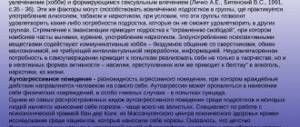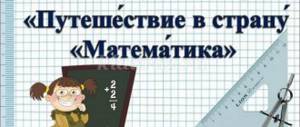GTO standards are standards by which the level of physical development of a person is determined. GTO tests determine speed, strength, flexibility, and endurance. In total, the GTO complex includes 11 stages for different age categories of the population.
The abbreviation GTO stands for “ready for work and defense.” It came from the Soviet past, when great attention was paid to the physical development of the country's citizens. Since 2014, the GTO has been returned. The government has developed test standards for the All-Russian GTO Physical Culture and Sports Complex. The TRP 2020 standards have been prepared - a table of standards by level. TRP standards 2020 - the table of standards by stages contains the same requirements; no innovations or changes were introduced in 2020. There are 11 steps in total:
- level 1-5 - for schoolchildren (standards are given separately for girls and boys);
- level 6-11 - for men, by age category;
- level 6-11 1 for women, by age category.
GTO standards for schoolchildren, levels 1-6
1st stage (6-8 years)
Conducted among participants up to 8 years old inclusive. How many mandatory and additional tests must be passed in total to receive insignia:
- bronze - 4 mandatory plus 2 optional (6 in total);
- silver - 4 mandatory plus 2 optional (6 in total);
- gold - 4 mandatory plus 3 optional (7 in total).
TRP standards 2020 - table of standards for schoolchildren (mandatory tests).
| Boys | Girls | ||||||
| No. | Tests | bronze | silver | gold | bronze | silver | gold |
| 1 | Shuttle run 3x10 m (in seconds) | 10,3 | 10,0 | 9,2 | 10,6 | 10,4 | 9,5 |
| Or 30m run (in seconds) | 6,9 | 6,7 | 6,0 | 7,1 | 6,8 | 6,2 | |
| 2 | Mixed movement at 1000 m (in minutes and seconds) | 7.10 | 6.40 | 5.20 | 7.35 | 7.05 | 6.00 |
| 3 | Pull-ups from hanging on a high bar (number of times) | 2 | 3 | 4 | — | — | — |
| Or a hanging pull-up lying on a low bar 90 cm (number of times) | 6 | 9 | 15 | 4 | 6 | 11 | |
| Or flexion and extension of the arms while lying on the floor (number of times) | 7 | 10 | 17 | 4 | 6 | 11 | |
| 4 | Bend forward from a standing position on a bench (from the level of the bench in cm) | +1 | +3 | +7 | +3 | +5 | +9 |
Optional tests (level 1).
| Boys | Girls | ||||||
| No. | Tests | bronze | silver | gold | bronze | silver | gold |
| 5 | Standing long jump with two legs push (in cm) | 110 | 120 | 140 | 105 | 115 | 135 |
| 6 | Throwing a tennis ball at a target, distance 6 m (number of hits) | 2 | 3 | 4 | 1 | 2 | 3 |
| 7 | Raising the body from a supine position (how many times in 1 minute) | 21 | 24 | 35 | 18 | 21 | 30 |
| 8 | Skiing 1 km (in minutes and seconds) | 10.15 | 9.00 | 8.00 | 11.00 | 9.30 | 8.30 |
| Or mixed movement over rough terrain for 1 km (in minutes and seconds) | 9.00 | 7.00 | 6.00 | 9.30 | 7.30 | 6.30 | |
| 9 | Swimming 25 meters (in minutes and seconds) | 3.00 | 2.40 | 2.30 | 3.00 | 2.40 | 2.30 |
Level 2 (9-10 years)
Conducted among participants up to 10 years old inclusive. How many mandatory and additional tests must be passed in total to receive insignia:
- bronze - 4 compulsory plus 3 optional (7 in total);
- silver - 4 mandatory plus 3 optional (7 in total);
- gold - 4 mandatory plus 4 optional (8 in total).
The GTO standards for schoolchildren 2020 (table) remained unchanged in 2020. TRP standards 2020 - table of standards for mandatory tests.
| Boys | Girls | ||||||
| No. | Tests | bronze | silver | gold | bronze | silver | gold |
| 1 | 60m sprint (in seconds) | 12,0 | 11,6 | 10,5 | 12,9 | 12,3 | 11,0 |
| 2 | 1 km run (in minutes and seconds) | 6.3 | 6.10 | 4.50 | 6.50 | 6.30 | 6.00 |
| 3 | Pull-ups from hanging on a high bar (number of times) | 2 | 3 | 5 | — | — | — |
| Or pull-ups from a hanging position lying on a low bar (number of times) | — | — | — | 7 | 9 | 15 | |
| Or flexion and extension of the arms while lying on the floor (number of times) | 9 | 12 | 16 | 5 | 7 | 12 | |
| 4 | Bend forward from a standing position with straight legs on the floor | Touching the floor with your fingers | Touching the floor with your fingers | Reach the floor with your palms | Touching the floor with your fingers | Touching the floor with your fingers | Reach the floor with your palms |
GTO standards: optional tests (2nd stage).
| Boys | Girls | ||||||
| No. | Tests | bronze | silver | gold | bronze | silver | gold |
| 5 | Running long jump (in cm) | 190 | 220 | 290 | 190 | 200 | 260 |
| Or standing long jump with a push with two legs (in cm) | 130 | 140 | 160 | 125 | 130 | 150 | |
| 6 | Throwing a ball weighing 150 g (in m) | 24 | 27 | 32 | 13 | 15 | 17 |
| 7 | Skiing 1 km (in minutes and seconds) | 8.15 | 7.45 | 6.45 | 8.40 | 8.20 | 7.30 |
| Or 2 km | Without | accounting | time | ||||
| Or a 2 km cross country race | Without | accounting | time | ||||
| 8 | Swimming without time (in m) | 25 | 25 | 50 | 25 | 25 | 50 |
Level 3 (11-12 years old)
Conducted among participants up to 12 years old inclusive. How many mandatory and additional tests in total do they take to receive insignia:
- bronze - 4 mandatory plus 2 optional (6 in total);
- silver - 4 mandatory plus 3 optional (7 in total);
- gold - 4 mandatory plus 4 optional (8 in total).
The GTO standards 2020 - the table of standards for schoolchildren of the 3rd stage remain unchanged in 2020. GTO standards: mandatory tests (3rd stage).
| Boys | Girls | ||||||
| No. | Tests | bronze | silver | gold | bronze | silver | gold |
| 1 | 60m sprint (in seconds) | 11,0 | 10,8 | 9,9 | 11,4 | 11,2 | 10,3 |
| 2 | 1.5 km run (in minutes and seconds) | 8.35 | 7.55 | 7.10 | 8.55 | 8.35 | 8.00 |
| Or 2 km (in minutes and seconds) | 10.25 | 10.00 | 9.30 | 12.30 | 12.00 | 11.30 | |
| 3 | Pull-ups from hanging on a high bar (number of times) | 3 | 4 | 7 | — | — | — |
| Or pull-ups from a hanging position lying on a low bar (number of times) | — | — | — | 9 | 11 | 17 | |
| Or flexion and extension of the arms while lying on the floor (number of times) | 12 | 14 | 20 | 7 | 8 | 14 | |
| 4 | Bend forward from a standing position with straight legs on the floor | Touch | gender | fingers | hands |
GTO standards: optional tests (3rd stage).
| Boys | Girls | ||||||
| No. | Tests | bronze | silver | gold | bronze | silver | gold |
| 5 | Running long jump (in cm) | 280 | 290 | 330 | 240 | 260 | 300 |
| Or standing long jump with a push with two legs (in cm) | 150 | 160 | 175 | 140 | 145 | 165 | |
| 6 | Throwing a ball weighing 150 g (in m) | 25 | 28 | 34 | 14 | 18 | 22 |
| 7 | 2 km ski run (in minutes and seconds) | 14.10 | 13.50 | 13.00 | 14.50 | 14.30 | 13.50 |
| Or 3 km | Without | accounting | time | ||||
| Or a 3 km cross country race | Without | accounting | time | ||||
| 8 | 50m swim (in minutes and seconds) | Without | time tracking | 0.50 | Without | time tracking | 0.50 |
| 9 | Shooting from an air rifle from a sitting or standing position with your elbows resting on a table or counter. Distance - 5 m (glasses) | 10 | 15 | 20 | 10 | 15 | 20 |
| Or from an electronic weapon from a sitting or standing position with your elbows resting on a table or counter. Distance - 5 m (glasses) | 13 | 20 | 25 | 13 | 20 | 25 | |
| 10 | Hiking trip with testing of tourist skills | Tourist | hike to | distance | 5 km |
Level 4 (13-15 years old)
Conducted among participants up to 15 years of age inclusive. How many mandatory and additional tests in total do they take to receive insignia:
- bronze - 4 mandatory plus 2 optional (6 in total);
- silver - 4 mandatory plus 3 optional (7 in total);
- gold - 4 mandatory plus 4 optional (8 in total).
GTO standards: mandatory tests (4th stage).
| Boys | Girls | ||||||
| No. | Tests | bronze | silver | gold | bronze | silver | gold |
| 1 | 60m sprint (in seconds) | 10,0 | 9,7 | 8,7 | 10,9 | 10,6 | 9,6 |
| 2 | 2 km run (in minutes and seconds) | 9.55 | 9.30 | 9.00 | 12.10 | 11.40 | 11.00 |
| Or 3 km | Without | accounting | time | — | — | — | |
| 3 | Pull-ups from hanging on a high bar (number of times) | 4 | 6 | 10 | — | — | — |
| Or pull-ups from a hanging position lying on a low bar (number of times) | — | — | — | 9 | 11 | 18 | |
| Or flexion and extension of the arms while lying on the floor (number of times) | — | — | — | 7 | 9 | 15 | |
| 4 | Bend forward from a standing position with straight legs on the floor | Touching with fingers | hands on the floor | Reach the floor with your palms | Touching with fingers | hands on the floor |
GTO standards: optional tests (4th stage).
| Boys | Girls | ||||||
| No. | Tests | bronze | silver | gold | bronze | silver | gold |
| 5 | Running long jump (in cm) | 330 | 350 | 390 | 280 | 290 | 330 |
| Or standing long jump with a push with two legs (in cm) | 175 | 185 | 200 | 150 | 155 | 175 | |
| 6 | Raising the body from a supine position (number of times per 1 minute) | 30 | 36 | 47 | 25 | 30 | 40 |
| 7 | Throwing a ball weighing 150 g (in m) | 30 | 35 | 40 | 18 | 21 | 26 |
| 8 | 3 km ski run (in minutes and seconds) | 18.45 | 17.45 | 16.30 | 22.30 | 21.30 | 19.30 |
| Or 5 km (in minutes and seconds) | 28.00 | 27.15 | 26.00 | — | — | — | |
| Or a 3 km cross country race | Without | accounting | time | ||||
| 9 | 50m swim (in minutes and seconds) | Without | time tracking | 0.43 | Without | time tracking | 1.05 |
| 10 | Shooting from an air rifle from a sitting or standing position with your elbows resting on a table or counter. Distance - 5 m (glasses) | 15 | 20 | 25 | 15 | 20 | 25 |
| Or from an electronic weapon from a sitting or standing position with your elbows resting on a table or counter. Distance - 5 m (glasses) | 18 | 25 | 30 | 18 | 25 | 30 | |
| 11 | Hiking trip with testing of tourist skills | Tourist | hike to | distance | 10 km | ||
| 12 | Self-defense without weapons (glasses) | 15-20 | 21-25 | 26-30 | 15-20 | 21-25 | 26-30 |
Level 5 (16-17 years old)
Conducted among participants up to 17 years of age inclusive. How many mandatory and additional tests in total do they take to receive insignia:
- bronze - 4 mandatory plus 2 optional (6 in total);
- silver - 4 mandatory plus 3 optional (7 in total);
- gold - 4 mandatory plus 4 optional (8 in total).
GTO standards: mandatory tests (5th stage).
| Boys | Girls | ||||||
| No. | Tests | bronze | silver | gold | bronze | silver | gold |
| 1 | 100m sprint (in seconds) | 14,6 | 14,3 | 13,8 | 18,0 | 17,6 | 16,3 |
| 2 | 2 km run (in minutes and seconds) | 9.20 | 8.50 | 7.50 | 11.50 | 11.20 | 9.50 |
| Or 3 km | 15.10 | 14.40 | 13.10 | — | — | — | |
| 3 | Pull-ups from hanging on a high bar (number of times) | 8 | 10 | 13 | — | — | — |
| Or kettlebell snatch 16 kg (number of times) | 15 | 25 | 35 | — | — | — | |
| Or pull-ups from a hanging position lying on a low bar (number of times) | — | — | — | 11 | 13 | 19 | |
| Or flexion and extension of the arms while lying on the floor (number of times) | — | — | — | 9 | 10 | 16 | |
| 4 | Bend forward from a standing position with straight legs on a gymnastic bench (below the level of the bench) | 6 | 8 | 13 | 7 | 9 | 16 |
GTO standards: optional tests (5th stage).
| Boys | Girls | ||||||
| No. | Tests | bronze | silver | gold | bronze | silver | gold |
| 5 | Running long jump (in cm) | 360 | 380 | 440 | 310 | 320 | 360 |
| Or standing long jump with a push with two legs (in cm) | 200 | 210 | 230 | 160 | 170 | 185 | |
| 6 | Raising the body from a supine position (number of times per 1 minute) | 30 | 40 | 50 | 20 | 30 | 40 |
| 7 | Throwing a ball weighing 700 g (in m) | 27 | 32 | 38 | — | — | — |
| Or weighing 500g (in m) | — | — | — | 13 | 17 | 21 | |
| 8 | 3 km ski run (in minutes and seconds) | — | — | — | 19.15 | 18.45 | 17.30 |
| Or 5 km (in minutes and seconds) | 25.40 | 25.00 | 23.40 | — | — | — | |
| Or a 3 km cross country race | — | — | — | Without | accounting | time | |
| 9 | 50m swim (in minutes and seconds) | Without | time tracking | 0.41 | Without | time tracking | 1.10 |
| 10 | Shooting from an air rifle from a sitting or standing position with your elbows resting on a table or counter. Distance - 5 m (glasses) | 15 | 20 | 25 | 15 | 20 | 25 |
| Or from an electronic weapon from a sitting or standing position with your elbows resting on a table or counter. Distance - 5 m (glasses) | 18 | 25 | 30 | 18 | 25 | 30 | |
| 11 | Hiking trip with testing of tourist skills | Tourist | hike to | distance | 10 km | ||
| 12 | Self-defense without weapons (glasses) | 15-20 | 21-25 | 26-30 | 15-20 | 21-25 | 26-30 |
Most students graduate from school as adults; boys and girls from 18 to 29 years old are offered to take the GTO standards of the sixth stage.
Where it all began
The creation of the complex began in 1930 on the initiative of Komsomol organizations. The desire to introduce young people to a healthy lifestyle - this task was put at the forefront. The Komsomolskaya Pravda newspaper published an article calling for the introduction of tests at the All-Union level.
The organizers proposed establishing a criterion for assessing the physical condition and health of USSR citizens. It was decided to reward those who passed a set of tests and met the standards with badges. This initiative found support among the masses. The best domestic minds were involved in the development of the “Ready for Labor and Defense” (GTO) system. In March 1931, it saw the light of day and was approved by the government.
Since then, active promotion of the newly approved program began. Compulsory sports training classes were introduced in educational institutions, which ended with tests. Those who passed the test in various sports disciplines were awarded badges.
Initially, the badges were awarded to women and men over 17 and 18 years of age. Different standards were established for three age categories
The very first complex had only one stage. It contained 21 standards. The practical test included:
- jumping;
- run;
- throwing a grenade;
- swimming;
- pull-up;
- rowing.
Theoretical knowledge was also tested. The subjects had to know the basics of self-control, the history of sports achievements, and could also provide first aid.
Checks were carried out both in cities and villages. GTO standards have become mandatory for employees of large enterprises and organizations. The management obliged me to hand them over. All kinds of incentives were introduced for particularly distinguished citizens. The standards were publicly available. The benefits of playing sports were obvious, and no one doubted them. The complex has become popular among both adults and young people. In 1931, 24,000 Soviet citizens received GTO badges.
Young people with the badge received benefits when entering specialized educational institutions with a physical education focus, and also had a preferential right to participate in various sports festivals, events, competitions at the union and even international level.
It was decided to create the second stage of the GTO complex. It was prepared and approved in 1932. The additional system included 25 standards for men, 22 of them were practical, and 3 of them were theoretical. Female representatives passed standards in 21 sports. Soon the Government decided to include children in the GTO system. It was called “Be Prepared for Labor and Defense” (BGTO). The children's complex was published in 1934. The BGTO system became mandatory and was included in the curriculum of all schools. Children were offered the following standards:
- running at various distances;
- rope climbing;
- long and high jumps;
- throwing a grenade;
- pull-ups and push-ups.
For many years, increased attention has been paid to passing GTO standards in schools, educational institutions and enterprises.
Interesting fact: the GTO standards were mentioned in the work of S. Marshak, written in 1937 under the title “The Story of an Unknown Hero.” Firefighters, police, and photographers were looking for him: “The GTO sign is on his chest, they don’t know anything about him anymore.”
The standards of the GTO complex have been subject to changes several times. One of the biggest changes was made in 1972. All standards were reduced, now they became less stringent, tests were taken selectively. The original rules were relevant for war and post-war times. The leaders of the Soviet state, Joseph Stalin, emphasized the importance of the GTO program. The population had to endure the hardships of wartime and repel enemies. It was necessary to confirm the ability to overcome obstacles, shoot from a small-caliber rifle, swim well, do forced marches, and observe military discipline. With the advent of peacetime, the need for such standards disappeared.
With the beginning of perestroika and the collapse of the Soviet Union in 1991, the GTO system was forgotten. They began to pay less attention to physical training.
GTO standards for men
The GTO 2020 standards for men are set by age from 6 to 11 stages. Stage 6 includes standards for men from 18 to 29 years old. Level 6 of the GTO 2020 standard - a table of standards for men from 18 to 29 years old.
GTO in the USSR. Story
In the twenty-first century, there was a revival of the “Ready for Labor and Defense” (RLD) complex. The history of the emergence and development of the program aimed at improving the health of the nation is interesting and original.
Soviet schoolchildren remember with trepidation the abbreviation GTO - a symbol of physical, cultural, psychological preparation for the difficulties of life.
Let's try to outline the main stages of the development of the complex in this article.
After the October Revolution, a rise was felt among the masses. People felt enthusiasm, strength, and a desire to create new things. The prerequisites for the emergence of the GTO occurred in the post-revolutionary period. The Soviet Union needed citizens capable of repelling a potential enemy, since the political position of the state was fragile. Discipline, self-defense skills, handling weapons, physical endurance, flexibility - these qualities were encouraged and nurtured. People between the ages of 18 and 40 were required to learn military skills at their place of work. Military scientific societies were created in universities. The state took control of the situation. Even M. Frunze led society to the idea: if a war begins, it will be fought not only by the military, but by the entire people. World history has shown that this is true.
In 1927, the Society for the Promotion of Defense, Aviation and Chemical Construction (OSOAVIAHIM) was founded. People built shooting ranges, educational political and military history clubs, where young people quickly mastered new professions (pilot, nurse, radio operator).
GTO standards for women
GTO standards 2020 for all ages - the table for women did not change in 2020. As for men, there are levels from 6 to 11, divided by age groups. TRP standards 2020 for all ages - table for level 6 (age from 18 to 29 years).
What advantages can a gold GTO badge give to an applicant?
If an applicant has a gold TRP badge, this must be indicated when submitting documents to the university. A numbered certificate is issued for the badge, which indicates the type of badge, first name, patronymic and last name of its owner. You will need to present it as proof of your achievements. Order of the Ministry of Education and Science of the Russian Federation dated October 14, 2015 No. 1147 states that upon admission to a university, additional points may be awarded for such an achievement. The specific number of points is not indicated, but it is said that for individual achievements there cannot be more than 10 points in total. A gold badge received during training can help you transfer to a budget place or receive an increased scholarship. For each specific university, you need to find out the latest information on the official website, in the admissions committee or in the admissions office of the dean of your faculty.
How and when did the GTO come into being?
In 1930, the Komsomol came up with a proposal to create the “Ready for Labor and Defense” complex. The USSR Central Executive Committee noted the interest of the public and ordered the development of a GTO complex. It consisted of a number of standards, after passing which a person received a GTO badge. The program involved active physical education of citizens. The focus was on the younger generation.
Next, propaganda was used: in the workplace, people were taught to resist the enemy. Air defense training was conducted. This happened everywhere: in factories, factories, schools, technical schools, and higher educational institutions. Competitions were held during leisure time, in free time from work and study: it was considered useful to always play sports, and not just as directed. The initiative was supported in every possible way.
To receive the GTO badge, you had to pass a test. Young people of both sexes over 17-18 years old were allowed.
Professional athletes also had the right to take part. When passing the standards, people were divided into “groups” depending on gender and age. At that time there were 3 groups:
If you have any questions, please let us know Ask a Question
- from 18 to 25 years old;
- from 25 to 35 years;
- from 35 and older.
The tests consisted of 21 items. More than half of them were practical. Running over various distances, swimming, jumping, shot throwing, pull-ups, skiing, moving in a gas mask, moving with a load of about 30 kg, horse riding, ability to ride a bicycle/moped/car... The GTO standards were many times more severe when compared with modernity. The test was not limited to this: it was necessary to pass the theoretical basis. It included knowledge of physical education stages, the basics of military craft, first aid, and self-control during physical exercises. All a person’s achievements were recorded on a special ticket. Badges were made of aluminum, copper, and brass.
The benefits of GTO were not questioned; they were obvious. Passing the standards was popular among the younger segments of the population. In technical schools, schools, universities, collective farms, plants, factories - they took the GTO test everywhere. Implementation of the standards was a large-scale undertaking.







